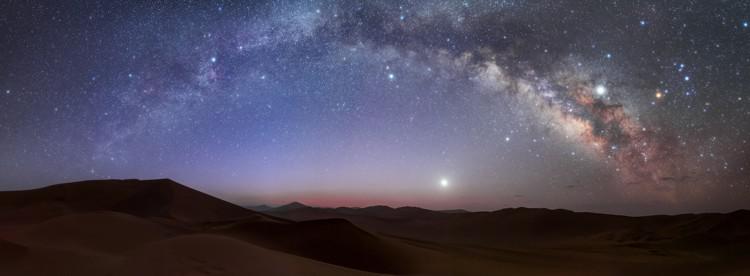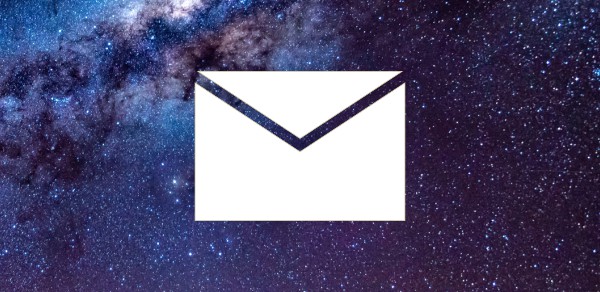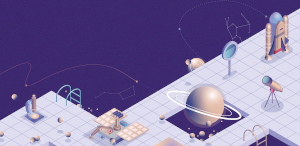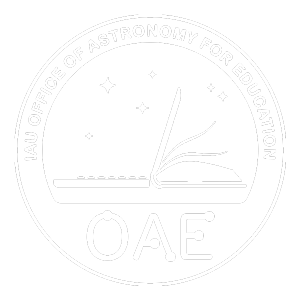This page describes an image Milky Way Arch over Lut Desert, Iran, by Amirreza Kamkar, Iran (Islamic Republic of)
Image caption:
Second place in the 2021 IAU OAE Astrophotography Contest, category Wide star fields.
This panoramic dawn image shows the majestic band of the Milky Way – our home Galaxy – made up of a few hundred billion stars, among other structures, most of which are not detectable by our eyes, or in some cases even directly with telescopes. The appearance of the band is because the Milky Way is a disc-shaped galaxy, and we (Earth/Solar System) are situated within the disc.
Diverse cultures and traditions around the world each have their own name and cultural stories for the Milky Way. The dark regions visible in the Milky Way are large, dense, cool nebulae (clouds of dust and gas), which obscure the light from stars in the Milky Way. The Indigenous Australians associate stories with the dark patches of the Milky Way, one of the most prominent being the Emu in the Sky (called Tchingal in Wotjobaluk country). In and around the band of the Milky Way there are a vast range of star clusters, two familiar ones are M6 (Butterfly cluster) and M7 (Ptolemy’s cluster).
The bright point just above the horizon is the planet Venus (known to the Boorong people of Indigenous Australia as Chargee Gnowee, elder sister of the Sun). Within the band of the Milky Way the brightest point in the image is the planet Jupiter (called Ginabongbearp, the Sulphur-crested white cockatoo by the Boorong). The planet Saturn is the bright point between Venus and Jupiter (closer to Venus than Jupiter).
There are two constellations and one asterism that can be easily discerned in the image: Aquila, Scorpio (Maui’s Hook), and Teapot (asterism in Sagittarius). In this image, the center of the Milky Way at an approximate distance of 26,000 light years from Earth, is located roughly to the top right of the Teapot spout.
The bright red-orange point to the right of Jupiter is the red supergiant star Antares and is part of the constellation Scorpio (known as Maui’s Hook in Māori and Polynesian cultures). This variation in the colour of stars is the result of temperature of the stars (lower temperature stars are redder, higher temperatures stars are bluer).
Scroll to captions in other languages
Image credit:
Amirreza Kamkar/IAU OAE
DOI: 10.5281/zenodo.5425799
Related glossary terms:
Dust Cloud
, Milky Way
Categories:
Milky Way and Interstellar Medium
, Naked Eye Astronomy
Image license: Creative Commons Attribution 4.0 International (CC BY 4.0) Creative Commons Attribution 4.0 International (CC BY 4.0) icons
The media file captions presented on the OAE website were written, translated and reviewed by a collective effort from the OAE, the OAE Centers and Nodes, the OAE National Astronomy Education Coordinators (NAECs) and other volunteers. You can find a full list of credits for our translation project here. All media file captions are released under a Creative Commons CC BY-4.0 license and should be credited to "IAU OAE". The media files themselves may have different licenses (see above) and should be credited as listed above under "credit".
If you notice a factual error in this caption or an error in any of its translations then please get in touch.
Captions in Different Languages:
Image caption: Secondo posto al concorso di astrofotografia IAU OAE 2021, categoria "Campi stellari estesi".
Questa immagine panoramica dell'alba mostra la maestosa fascia della Via Lattea - la Galassia in cui ci troviamo - composta da alcune centinaia di miliardi di stelle e da varie altre strutture, la maggior parte delle quali non possono essere percepite dall'occhio umano, e talvolta neanche direttamente dai telescopi. La Via Lattea assume l'aspetto di una fascia perché si tratta di una galassia a forma di disco, e noi (Terra e Sistema Solare) ci troviamo al suo interno.
Diverse culture e tradizioni in tutto il mondo hanno un proprio nome per la Via Lattea e i propri miti a riguardo. Le regioni scure visibili nella Via Lattea sono costituite da grandi, dense e fredde nebulose (nubi di polvere e gas), che oscurano la luce delle stelle della Galassia. Gli indigeni australiani associano diverse storie alle macchie scure della Via Lattea; una delle più importanti è quella dell'Emù nel cielo (chiamato Tchingal nella terra dei Wotjobaluk). All'interno e in prossimità della fascia della Via Lattea si trovano numerosi ammassi stellari, due dei quali sono molto conosciuti: M6 (l'Ammasso Farfalla) e M7 (l'Ammasso di Tolomeo).
Il punto luminoso appena sopra l'orizzonte è il pianeta Venere (conosciuto dalle popolazioni Boorong dell'Australia aborigena come Chargee Gnowee, sorella maggiore del Sole). Il punto più luminoso dell'immagine, all'interno della fascia della Via Lattea, è il pianeta Giove (chiamato Ginabongbearp, il cacatua bianco dalla cresta di zolfo, dai Boorong). Il pianeta Saturno è il punto luminoso situato tra Giove e Venere, leggermente più vicino a quest'ultimo.
Due costellazioni e un asterismo sono facilmente distinguibili nell'immagine: Aquila, Scorpione (Gancio di Maui) e Teiera (asterismo nel Sagittario). In questa immagine il centro della Via Lattea, la cui distanza dalla Terra è di circa 26.000 anni luce, si trova approssimativamente in alto a destra rispetto al beccuccio della Teiera.
Il punto luminoso rosso-arancio alla destra di Giove è la stella supergigante rossa Antares, che fa parte della costellazione dello Scorpione (nota come Gancio di Maui nella cultura Māori e in quelle polinesiane). La differenza di colore delle stelle è il risultato della loro temperatura superficiale (le stelle di bassa temperatura sono più rosse, quelle di alta temperatura sono più blu).
Image credit: Amirreza Kamkar/IAU OAU
Related glossary terms: Nube di polvere , Via Lattea Caption translation status: Approved by a reviewer
Caption translators: Giuliana Giobbi, Emanuele Nardini
Caption reviewers: Silvia Casu, Rosa Valiante, Rodolfo Canestrari, Raffaella Ferretti
Image caption: 2021年国际天文学联合会天文摄影大赛第二名,类别:广域星空。
这张全景黎明图像展示了壮丽的银河带——我们的家园星系,由数千亿颗恒星及其他结构组成,其中大部分结构无法用肉眼观测到,甚至在某些情况下也无法直接用望远镜观测到。银河带的外观是因为银河系是一个盘状星系,而我们(地球/太阳系)位于这个盘状结构之中。
世界各地的不同文化和传统对银河都有各自的名称和文化故事。银河中可见的暗区是巨大、密集且寒冷的星云(尘埃和气体云),它们遮蔽了银河中恒星的光。澳大利亚原住民将银河中的暗区与故事联系起来,其中最著名的一个是“天空中的鸸鹋”(在Wotjobaluk地区称为Tchingal)。在银河带及其周围,有各种各样的星团,其中两个熟悉的星团是M6(蝴蝶星团)和M7(托勒密星团)。
地平线上方的亮点是金星(澳大利亚原住民布龙族称之为Chargee Gnowee,太阳的姐姐)。在银河带中,图像中最亮的点是木星(布龙族称之为Ginabongbearp,即硫冠白凤头鹦鹉)。土星是金星和木星之间的亮点(更靠近金星)。
图像中可以轻易辨认出两个星座和一个星群:天鹰座、天蝎座(毛利人和波利尼西亚文化中的Maui’s Hook)和茶壶星群(位于人马座)。在这张图像中,距离地球约26,000光年的银河系中心大致位于茶壶壶嘴的右上方。
木星右侧的亮红橙色点是红超巨星心宿二,是天蝎座的一部分(在毛利人和波利尼西亚文化中称为Maui’s Hook)。恒星颜色的这种变化是恒星温度的结果(温度较低的恒星偏红,温度较高的恒星偏蓝)。
Image credit: Amirreza Kamkar/IAU OAU
Related glossary terms: 尘埃云 , 银河系 Caption translation status: Not yet approved by a reviewer
Caption translators: Xiao Jingyu
Image caption: 2021年國際天文學聯合會天文攝影大賽第二名,類別:廣域星空。
這張全景黎明圖像展示了壯麗的銀河帶——我們的家園星系,由數千億顆恆星及其他結構組成,其中大部分結構無法用肉眼觀測到,甚至在某些情況下也無法直接用望遠鏡觀測到。銀河帶的外觀是因為銀河系是一個盤狀星系,而我們(地球/太陽系)位於這個盤狀結構之中。
世界各地的不同文化和傳統對銀河都有各自的名稱和文化故事。銀河中可見的暗區是巨大、密集且寒冷的星雲(塵埃和氣體雲),它們遮蔽了銀河中恆星的光。澳大利亞原住民將銀河中的暗區與故事聯繫起來,其中最著名的一個是“天空中的鸸鹋”(在Wotjobaluk地區稱為Tchingal)。在銀河帶及其周圍,有各種各樣的星團,其中兩個熟悉的星團是M6(蝴蝶星團)和M7(托勒密星團)。
地平線上方的亮點是金星(澳大利亞原住民布龍族稱之為Chargee Gnowee,太陽的姐姐)。在銀河帶中,圖像中最亮的點是木星(布龍族稱之為Ginabongbearp,即硫冠白鳳頭鸚鵡)。土星是金星和木星之間的亮點(更靠近金星)。
圖像中可以輕易辨認出兩個星座和一個星群:天鷹座、天蠍座(毛利人和波利尼西亞文化中的Maui’s Hook)和茶壺星群(位於人馬座)。在這張圖像中,距離地球約26,000光年的銀河系中心大致位於茶壺壺嘴的右上方。
木星右側的亮紅橙色點是紅超巨星心宿二,是天蠍座的一部分(在毛利人和波利尼西亞文化中稱為Maui’s Hook)。恆星顏色的這種變化是恆星溫度的結果(溫度較低的恆星偏紅,溫度較高的恆星偏藍)。
Image credit: Amirreza Kamkar/IAU OAU
Related glossary terms: 塵埃雲 , 銀河系 Caption translation status: Not yet approved by a reviewer
Caption translators: An automated transliteration from the simplified Chinese translation by - Xiao Jingyu









